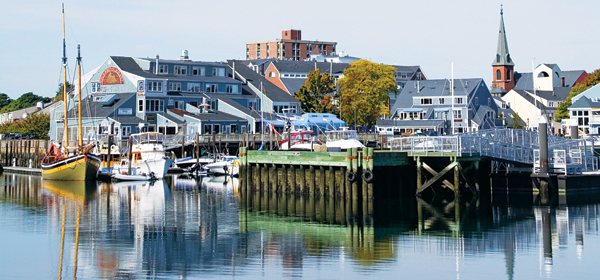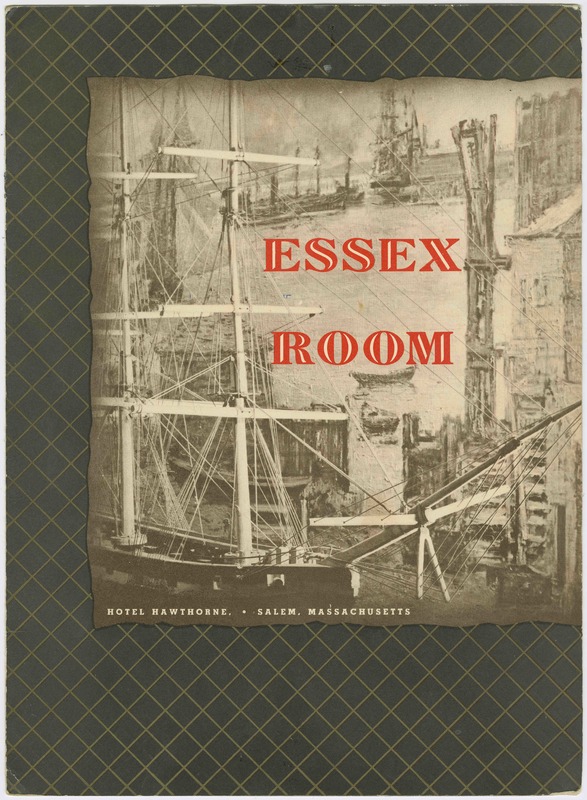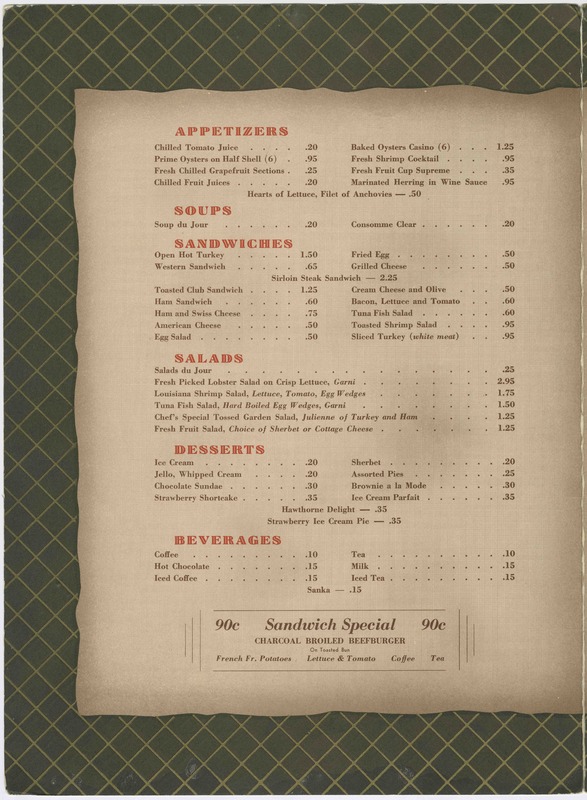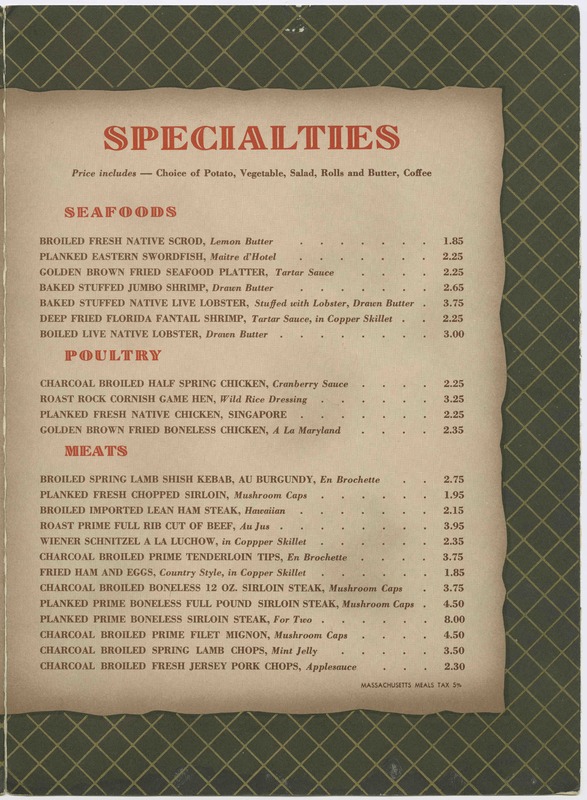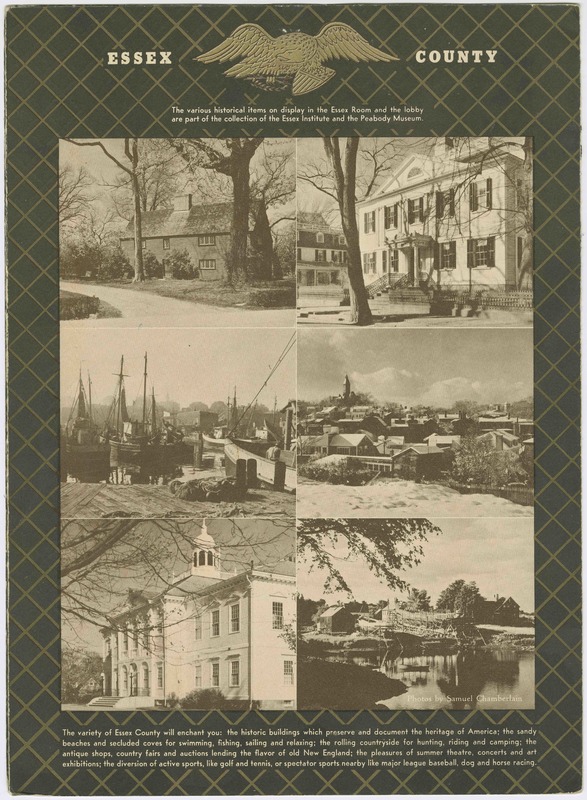Essex Room menu
My archival menu is from the restaurant “Essex Room” in the Hawthorne Hotel. The hotel is located in Washington Square in Salem, Massachusetts. Although the hotel is still there, the restaurant is not.
This restaurant was in operation in the 1940’s/1950’s. The approximate date of the menu is the early 1950’s. I know this because the prices of the food on the menu matched to the typical American restaurant prices in the 1950’s. I know it is early 1950’s because the Hawthorne Hotel was renamed the Hawthorne Motor Hotel in 1955 because of the increasing demand on motor vehicles. On the menu, it says. “Hotel Hawthorne”, therefore this menu was used before the hotel was renamed. Originally, the hotel was named after Nathaniel Hawthorne. He was from Salem and is the author of The Scarlett Letter and The House of Seven Gables. There are no references to him in the menu. There are theories that the hotel is haunted.
This restaurant is a typical American style restaurant. It had soups, salads, seafood, poultry, and meat. The menu is very simple and has a lot of classic American food like lobster, steak, and chicken served in different ways. The menu also had soups, salads, desserts, and beverages.
On my menu from The Essex Room, there are a few examples of marketing language. For example, it lists, “Fresh Picked Lobster Salad”. Fresh means that it was recently made or obtained, and it was not preserved. Using the word “fresh” makes the reader think more highly of it. Since the lobster is freshly picked, it must be better lobster. However, it should just be assumed that the food is fresh instead of having to read that it is. The menu uses the word “fresh” a few times, mostly when the food is a fruit. Sometimes, when people see the word “fresh”, they automatically think that food is healthier. The menu also uses different languages for some of the food. It lists, “Salad du Jour”. Du Jour means “of the day” in French. The menu says this instead of saying “Salad of the Day”. The use of French makes the meal seem fancier. The menu also lists “Brownie a la Mode”, which means a brownie served with ice cream, in French. This also makes the dessert to appear fancier when it is just a simple dessert. The rest of the food is listed in English. This menu does use some marketing language, however most of it are just simple listings of the food. I have found that the appetizers are much less descriptive than the entrees. In the entrees, there are words like broiled, planked, charcoal, baked, golden, and boiled. For the appetizers and sandwiches, the meal is stated without saying how it is prepared. For example, “Ham Sandwich”. There is no description of how the sandwich is prepared. This is apparent for most of the appetizers.
On the back of the menu, there are pictures of various places around Essex County. There are a few pictures of boats on the dock in the water. The other pictures are of houses and neighborhoods around Essex County. It is stated that there are historical items from these places all around the Essex Room. This infers that the Essex Room was historical and had different things representing Essex County in the restaurant. It is called the “Essex Room” because it represents Essex County. Essex County in MA was named after Essex County in England. It was created in 1643 to split plantation.
I have found that the Hawthorne Hotel is still open and there is still an “Essex Room”. However, it is no longer a restaurant but more of a meeting/event room. . I could not find any specific information about the items in the Essex Room.
